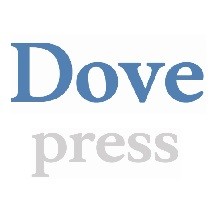
حساسیت Propionibacterium acnes جدا شده از بیماران مبتلا به آکنه والگاریس
هدف: فعالیت ضد میکروبی مشتقات اسید اسکوربیک، به تنهایی و چه به همراه عوامل ضد میکروبی دیگر، مورد بررسی قرار گرفتهاست و شاخص غلظت بازدارندهی نسبی آنها با آزمون شطرنجی تعیین شدهاست. علاوه بر این اثر ضد میکروبی اسکوربات بر درمان آکنه والگاریس، چه به تنهایی و چه به همراه آنتیبیوتیکهای دیگر کلیندامایسین که معمولاً در ژاپن برای درمان آکنه والگاریس به کار میرود، مورد بررسی قرار گرفتهاست.
مواد و روشها: حساسیت ضد میکروبی 41 سویهی P. acnes حساس و مقاوم به کلیندامایسین، جداشده از بیماران آکنه والگاریس در مقایسه با سویهی نوع a آزمودهشد.
نتایج: اسکوربات روی در برابر سویهی نوع a باکتری P. acnes فعالیت ضد میکروبی نشان داد و غلظت 064/0% آن به طور مؤثری از دوز نرمال سایر مشتقات اسید اسکوربیک (5%) پایینتر بود. ترکیب اسکوربات روی با کلیندامایسین، اریترومایسین و کلرامفنیکل یک اثر افزوده نشان داد و اسکوربات روی به تنهایی و به طور مؤثر از رشد همهی سویههای P. acnes حتی سویهی مقاوم به کلیندامایسین جلوگیری کرد.
نتیجهگیری: نتایج، مدارک جدیدی نشان میدهند که ترکیب اسکوربات روی و کلیندامایسین در درمان آکنه والگاریس مؤثر است.
مقدمه
Propionibacterium acnes یک میکروب گرم-مثبت بیهوازی در پوست است که در غدد چربی و فولیکولهای چربی پوست ساکن میشود [1]. این میکروارگانیسم نقشی اساسی در پیشرفت آکنه والگاریس بازی میکند [1]. آکنه والگاریس یک بیماری التهابی مزمن است که با ویژگی علائم التهابی تیپیک شامل تولید بیش از حد چربی پوست، ریزش غیر عادی اپیتلیوم فولیکولهای چربی و تکثیر P. acnes شناختهمیشود [1-3]. دربارهی عوامل پاتوژن پیشرفت و تشدید آکنه، گزارش شدهاست که تابش فرابنفش، و پراکسیداسیون چربیهای مترشحه از پوست میانجیهای التهابی مانند گونههای واکنشپذیر اکسیژن را فعال میکنند [4]. مشتقات اسید اسکوربیک گروهی از پرکاربردترین آنتیاکسیدانها برای محافظت از پوست هستند [5، 6]. اثر آنتیاکسیداتیو « سدیوم اسکوربیلفسفات » 5% در آکنه والگاریس کارآیی خود را نشان دادهاست [7]. ولی به هر حال این که آیا مشتقات اسید اسکوربیک فعالیت ضد میکروبی دارند یا خیر مشخص نمیشود.
Purpose: The in vitro antimicrobial activity of ascorbic acid derivatives against Propionibacterium acnes was tested either alone or in combination with a variety of antimicrobial agents, and their fractional inhibitory concentration index was determined using checkerboard tests. The antimicrobial effectiveness of zinc ascorbate in the treatment of acne vulgaris, either alone or in combination with antibiotics such as clindamycin that are commonly used in Japan for the treatment of acne vulgaris, was therefore examined.
Materials and methods: The antimicrobial susceptibility of 41 strains of clindamycin-sensitive and/or clindamycin-resistant P. acnes isolated from acne vulgaris patients was tested, in comparison with a type strain of P. acnes.
Results: Zinc ascorbate showed antimicrobial activity against a type strain of P. acnes and its concentration (0.064%) was sufficiently lower than the normal dose (5%) of other ascorbic acid derivatives. Combinations of zinc ascorbate with clindamycin, erythromycin, and chloramphenicol showed an additive effect, and zinc ascorbate alone effectively inhibited the growth of all P. acnes including clindamycin-resistant strains.
Conclusion: The results provide novel evidence that the combination of zinc ascorbate and clindamycin is effective for acne vulgaris treatment.
Introduction
Propionibacterium acnes is an anaerobic, Gram-positive skin microbe that colonizes sebaceous glands and pilosebaceous follicles.1 This organism is considered to play a principal role in the development of acne vulgaris.1 Acne vulgaris is a chronic inflammatory disease characterized by typical inflammatory events, including the overproduction of sebum, abnormal desquamation of the sebaceous follicle epithelium, and P. acnes proliferation.1–3 Regarding the pathogenic factors for acne development and aggravation, ultraviolet irradiation and peroxidation of sebum lipids have been reported to activate inflammatory mediators such as reactive oxygen species.4 Ascorbic acid derivatives are some of the most widely used antioxidants for protecting the skin.5,6 The antioxidative effect of 5% sodium ascorbyl phosphate has demonstrated efficacy in acne vulgaris.7 However, it remains unclear whether ascorbic acid derivatives have antimicrobial activity against P. acnes.
مقدمه
مواد و روشها
سویه های باکتریها و داروها
تست حساسیت
شاخص غلظت بازدارنده نسبی (FIC)
نتایج
حساسیت آنتیبیوتیکی P. acnes به مشتقات اسید اسکوربیک
اثر ترکیبی اسکوربات روی و عوامل ضد میکروبی مختلف روی P. acnes
اثر ترکیبی اسکوربات روی و عوامل ضد میکروبی مختلف بر روی سویه های مقاوم به کلیندامایسین جداشده از بیماران
بحث
نتیجه گیری
Introduction
Material and methods
Bacterial strains and drugs
Susceptibility tests
Fractional inhibitory concentration (FIC) index
Results
The antibiotic susceptibility of P. acnes to ascorbic acid derivatives
Combined effect of zinc ascorbate and various antimicrobial agents against P. acnes
Combined effect of zinc ascorbate and various antimicrobial agents against clindamycin-resistant P. acnes isolated from patients with acne vulgaris
Discussion
Conclusion
- ترجمه فارسی مقاله با فرمت ورد (word) با قابلیت ویرایش، بدون آرم سایت ای ترجمه
- ترجمه فارسی مقاله با فرمت pdf، بدون آرم سایت ای ترجمه
